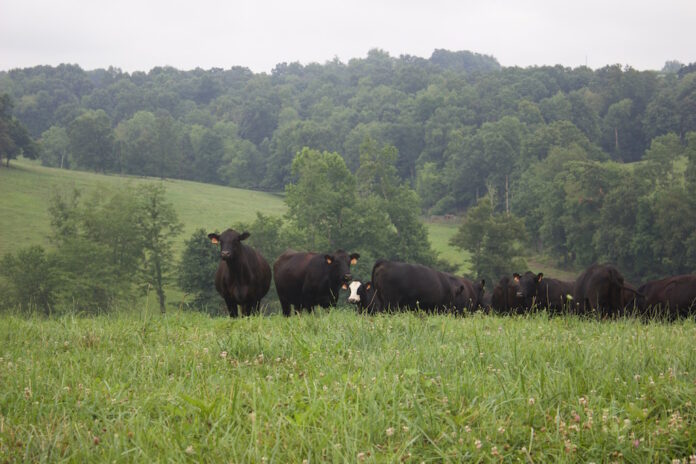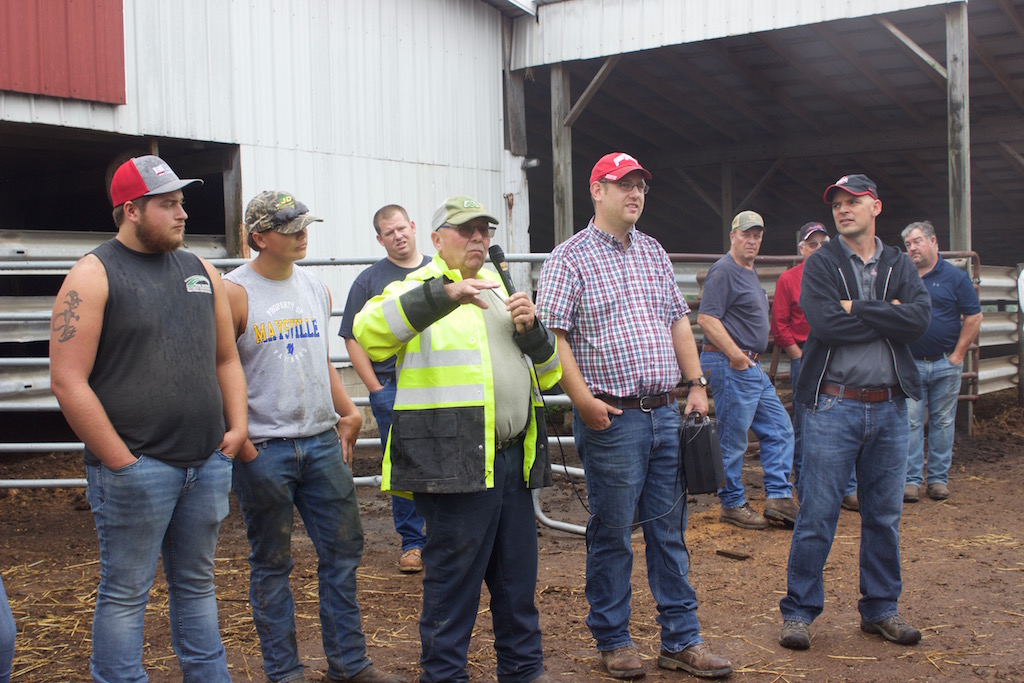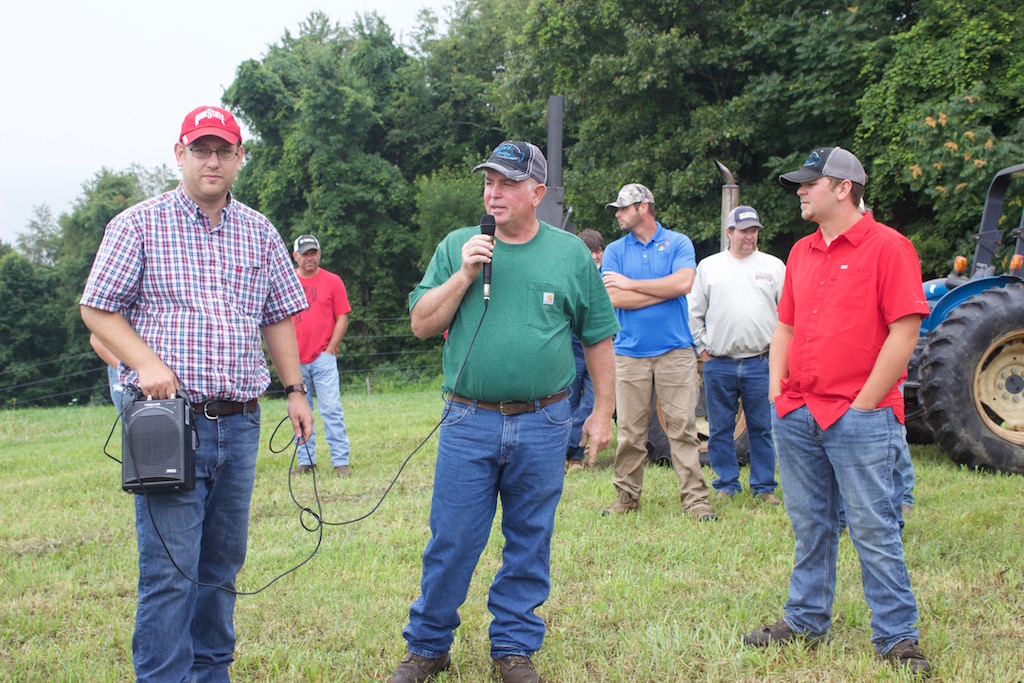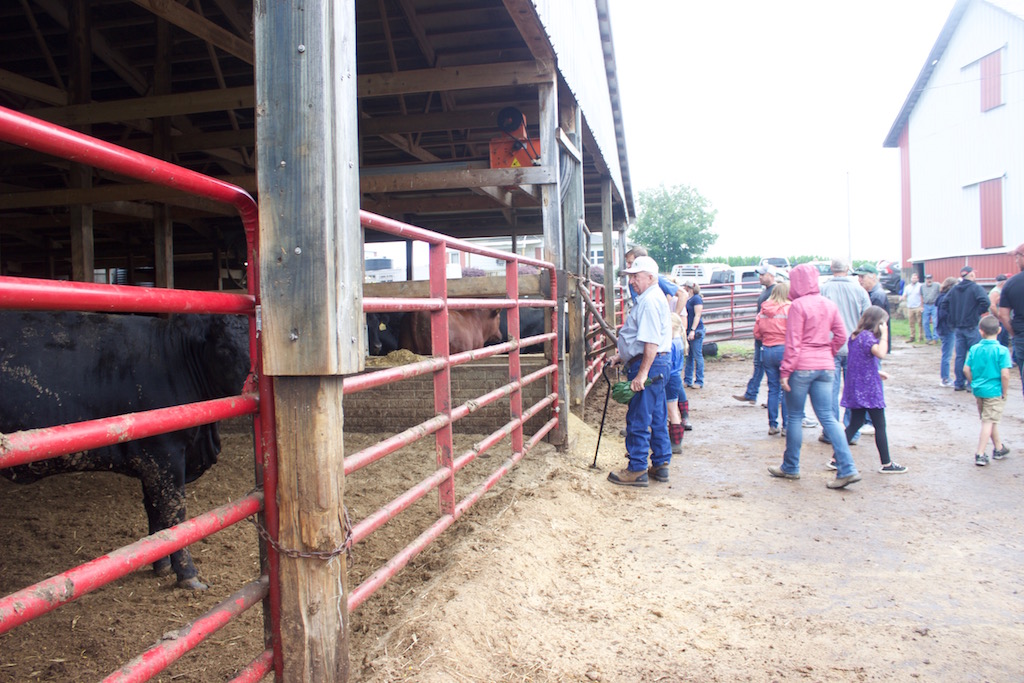
ZANESVILLE, Ohio — Whether for feedlots, or cow-calf farms, long-standing relationships with customers can make marketing beef cattle easier. Wade Hatfield, of Hatfield Farms, has sold most of his spring steer calves to the same customer for more than a decade. Dennis Michel, of Michel Livestock, has taken most of his finished cattle to Muskingum Livestock Auction for years.
Keeping the same, loyal customers for a long time also lets them know they’re doing something right, Hatfield said.
“For 16 years of him coming back and buying them, I think that’s pretty good,” Wade Hatfield said.
Farmers, processors and industry experts discussed beef cattle marketing and management at Michel Livestock, Hatfield Farms and Shirer Bros. Meats for the Ohio Beef Field Day, in Muskingum County, July 16.
Management
Feeding 500 cattle takes some calculating. Clayton Michel, of Michel Livestock, uses two different grower rations and also has a finishing ration for the cattle at the feedlot. Right now, the cattle in his finishing barn are eating about 31.5 pounds of feed per head each day. Cattle on the grower rations are getting about 30 pounds per day.
Dennis Michel said he keeps the cattle grouped together as they move from pen to pen until they go through the finishing barn and are ready to sell. Cattle typically spend about 150-175 days on feed.
Garth Ruff, beef cattle field specialist for Ohio State University Extension, pointed out the open sides on the finishing barn, an older barn.
“That certainly makes a tremendous amount of sense from the ventilation standpoint,” Ruff said. While there are ways to improve ventilation mechanically, often, the first thing feedlots can do to improve ventilation is take the sides off of their buildings.
At Hatfield Farms, cattle spend a lot of their time out on pastures. The farm raises about 250 cow-calf pairs, and does a mix of fall and spring calving.
“The later, I think, the fall calves are, the better off they do,” said Wesley Hatfield. He’s found that calves born later outperform those born earlier because of the cooler temperatures and less issues with flies. Ruff said given Ohio weather challenges, fall calving could be a good opportunity for some farmers.

Vaccines
Vaccines are an important part of management for both farms. Dennis Michel said he vaccinates all of the cattle that come onto his farm. If he can find cattle available that have already been treated, he’ll buy them, but he typically plans on vaccinating them himself.
The Hatfields also take a proactive approach on vaccinations.
“Nothing leaves here without being double vaccinated,” Wade Hatfield said.

Marketing
Both of the farms on the tour rely on long-term relationships with customers to market their beef.
Michel Livestock sells all of its cattle through the Muskingum Livestock Auction. The Hatfields have sold their spring steer calves to the same person, in Marion, Ohio, for about 16 years. They keep their heifers through the winter, and sell most of them to customers in Thornville.
Ruff said since he started in his role at Ohio State in 2020, the most common questions he’s gotten are about direct-to-consumer meat sales.
One of the biggest mistakes people make is going from selling whole, halves and quarters of beef to selling individual packages of beef without realizing that they need a separate license, said Peggy Hall, director of Ohio State’s Agricultural and Resource Law Program.
But while selling direct-to-consumer involves some more legal hurdles, it also can be a good opportunity. Some farmers she knows sell out of their beef within an hour at farmers markets.
“It does seem to be a good financial opportunity … to our growers and farmers who, you know, jump through the hoops,” Hall said. Those hoops include getting the proper licensing, and labeling packages accurately and legally. Any claims on advertisements or labels — for example, “all natural beef” — also have to be reviewed and approved by the department of agriculture.

Promotion
Representatives of the Ohio Cattlemen’s Association and Ohio Beef Council went over some of the checkoff’s efforts at the state and national level to promote beef.
Hanna Fosbrink, manager of communications for the Ohio Beef Council, said market research shows despite concerns about beef substitutes, the market share for those substitutes is still very small. It also shows people who have negative impressions of beef production often cite animal welfare as a reason for their concerns. The council found customers most often said they would trust farmers and ranchers for information about beef production.
“That’s who they trust, is the farmers and ranchers. So because of that, we decided to start taking all of our information and having it come from you guys,” Fosbrink said. That includes letters to the editor in national newspapers from farmers, posts on social media from farmers and videos showcasing local beef cattle farmers.
“We want our consumers to look at it and see that it’s Ohio … so they can relate to the videos a little bit more,” she said.











